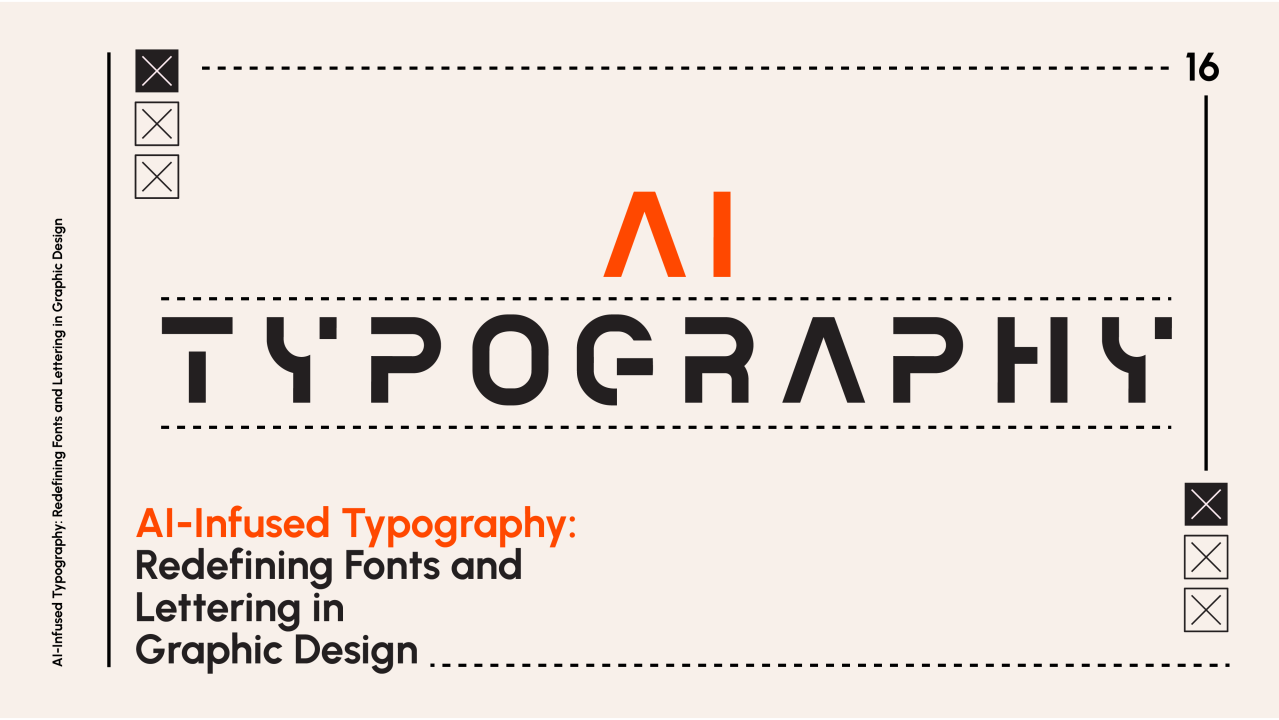Explore how AI-generated typography is transforming font design. Discover how machine learning and AI technologies are redefining typeface creation, enhancing efficiency, creativity, and customization while addressing challenges and future trends in typography.
The Development of Font Creation Using Intelligence Typography, the art of organizing letters plays a role, in design shaping how text is seen and interpreted. As technology advances artificial intelligence is transforming typography by offering ways to design and customize fonts. The emergence of AI driven typography is altering the process of font creation and application. This piece explores the influence of AI on typography the underlying technologies and the implications for designers and end users.
Understanding AI-Generated Typography
AI typography relies on algorithms and artificial intelligence to design, modify and improve fonts. Unlike traditional methods where artists meticulously shape each letter by hand AI simplifies this process opening up avenues for font innovation. Machine learning plays a role, in AI driven typography teaching algorithms to analyze vast font collections and identify patterns, styles and design principles. Once trained these algorithms can either generate new fonts or modify existing ones based on their acquired knowledge. For example AI can study diverse fonts to create variations that combine elements from different design aesthetics.
Generative Adversarial Networks (GANs) are a type of network used in AI powered typography. They consist of two components, the generator and the discriminator working together to produce outputs. In typography GANs can craft novel letter forms by learning from a set of fonts and iteratively improving their designs to achieve realistic and unique typefaces.
AI enhances the customization of fonts by simplifying the creation of variations. Traditionally producing weights, styles and character sets required effort. However with advancements in technology this process can now be automated allowing designers to quickly generate a range of fonts suited for uses, like headlines and body text.
The Impact of AI on Font Design
The emergence of AI in typography is influencing the world of font creation by altering how designers work and what they produce.
Speeding Up the Process With AI the time it takes to design a font can be significantly reduced. Instead of spending weeks or months crafting a typeface designers can utilize AI tools to quickly generate and fine tune fonts. This efficiency is especially valuable when facing deadlines or when working on multiple font styles simultaneously.
Unleashing Creativity AI powered typography opens up new possibilities, for creativity. Designers can explore font styles and combinations that may not be feasible using methods. AIs ability to generate and iterate on designs allows for the exploration of unconventional typefaces that push the boundaries of typography.
Making Design More Accessible AI tools democratize font creation. Previously crafting high quality typefaces required expertise and specialized knowledge. With AI resources the entry barriers are lowered enabling more individuals to try their hand at font design and create professional grade typefaces without extensive training.
The customization and personalization offered by AI in typography allows users to create fonts that match their unique preferences. For example AI tools can generate styles that mimic a persons handwriting or adapt fonts for languages and scripts. This level of tailoring enhances user experience and ensures that fonts meet the requirements of communities.
Challenges and Considerations
While the potential, for AI typography is promising there are challenges and considerations that need to be addressed.
Quality and Consistency: Ensuring the quality and consistency of AI generated typefaces can be a task. Although AI can quickly produce designs the resulting fonts may not always meet standards. Designers must carefully review and refine AI generated fonts to ensure they are functional, legible and visually appealing.
Ethical and Copyright Concerns: The use of AI in typography raises ethical and copyright issues. AI algorithms learn from existing fonts which brings up questions about property rights and originality. Designers and developers must navigate these complexities to ensure that AI generated fonts do not violate the rights of established typeface creators.
Collaboration Between Humans and AI, In the world of AI typography design human input plays a crucial role. While AI can streamline and enhance the font creation process it's the expertise that guides the creative direction makes adjustments and ensures that the fonts meet established design standards. The most successful typefaces produced by AI often result from a collaboration, between intelligence capabilities and human creativity.
Future Prospects for AI Typography, Looking ahead the field of AI typography is poised for evolution influencing font design. There are trends and potential developments on the horizon that could shape the future of AI in this domain.
Technological Advancements, With advancements in technology we can anticipate the rise of algorithms and models that can produce typefaces. Improvements in learning and neural networks will enhance the quality and flexibility of fonts generated by AI.
Integration with Design Tools The future of typography involves a blend of AI generated styles and design software. This integration will simplify how designers use AI fonts in their projects allowing for real time implementation of AI features.
Personalized and Dynamic Fonts We may see the rise of fonts that adapt to context and user preferences. AI could enable these fonts to change based on interactions, screen sizes or content providing a captivating typographic experience.
Collaboration and Open Source Projects The progress of AI generated typography will be driven by teamwork, among designers, developers and AI researchers. Open source initiatives and community efforts could lead to the creation of resources that make AI powered font design accessible to all fostering creativity.
In summary the application of AI in font creation is revolutionizing the design and customization of typefaces. Although there are challenges the benefits of utilizing AI in typography such as enhanced efficiency, increased creativity and improved accessibility highlight its impact. As AI technology evolves it will have a role in influencing the future of typography offering new possibilities for designers and users alike.
